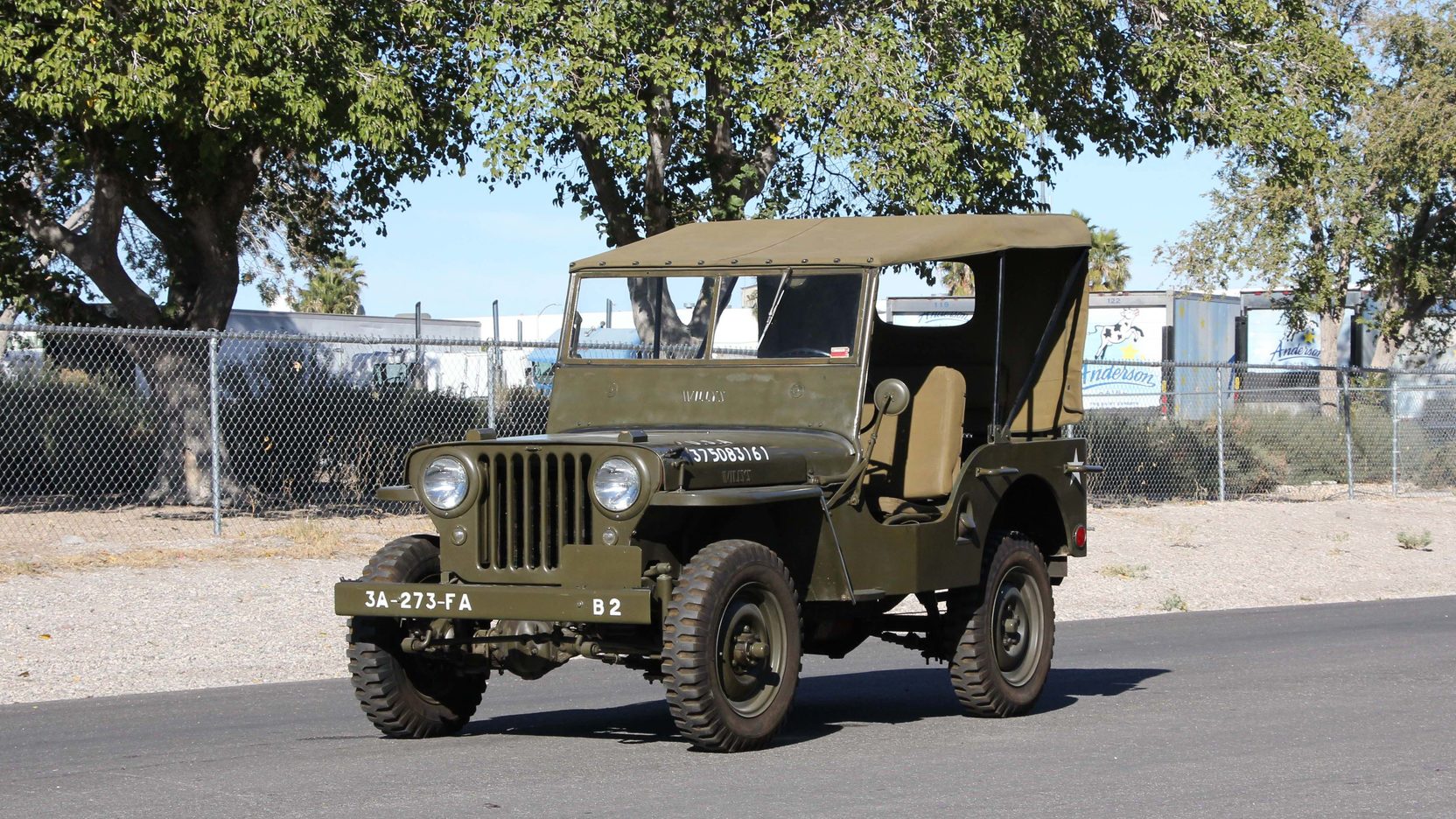Media | Articles
Jeep CJ: The greatest vehicle of the 1940s
As Classic Car Appreciation Day (July 13) approaches, we’ll be counting down each day with the greatest vehicle of each decade, from the earliest days of the automobile to the present. It’s by no means a final, definitive, for-all-time list, so please weigh in—respectfully—in the Forums with your comments, endorsements, and disagreements. Today: the 1940s.
Whether in war or peace, no vehicle from 1940–49 has the street cred (and off-road cred) to match the one and only Jeep CJ. Sure, production of the Volkswagen Beetle kicked into high gear in the mid-40s, and the Type 1 ultimately became the biggest-selling vehicle of all time. But the little Bug’s economy, reliability, and cuteness were no match for… you know… America!
There’s nothing complicated about the original Jeep CJ. No curvy lines. Not a lot of power. No creature comforts. Maybe the CJ’s simple, rugged nature adds to its coolness, because people just love the thing.

Author P.J. O’Rourke wrote about the Jeep for Hagerty magazine in 2014, and he described the humble beauty of its original Willys “Go Devil” L-head inline-four engine, which produced 60 horsepower, and its “Hurricane” successor, which was basically a Go Devil fitted with an F-head, pumped out 75 hp. “There wasn’t much on a Go Devil or a Hurricane, or the rest of a CJ, that couldn’t be fixed with electrical tape, a Scout knife, and Vise-Grip pliers,” O’Rourke wrote.
Marketplace
Buy and sell classics with confidence
Prior to WWII, the U.S. Army’s idea of all-terrain transport included horses and motorcycles, but soldiers who rode too high in the saddle—figuratively and literally—got themselves shot. Plus, motorcycles loaded with weapons and supplies tended to tip over. The Army tried customizing other vehicles for military use, but none really fit the bill. Then rearmament began in 1940, and the Army got serious about developing what it called “Truck, 4×4, Light.” The Ordnance Technical Committee ultimately decided that the vehicle should possess four-wheel drive, be able to climb a 60-degree grade with a mandated 85 ft-lb. of torque, and be equipped with hydraulic brakes in case something went wrong and it slid backward.
The track was 47 inches, which was about half the width of a one-lane road, so that retreating and advancing U.S. Army units could pass each other safely. The vehicle’s 40-inch height was decided simply by measuring the height of shrubbery where the committee met. Top speed was 50 mph, because soldiers had no need to go any faster than that. And the vehicle weighed 1275 pounds, the exact weight of a saddled-and-packed U.S. Cavalry horse and rider. Simple.


Of the 135 manufacturers that the Army asked to build a prototype, only two met the deadline, American Bantam and Willys-Overland. “The Bantam Reconnaissance Car, or BRC, made the deadline by half an hour,” O’Rourke wrote. “Almost every specification was met. It had hot rod front fenders and Bugeye Sprite headlights but otherwise looked remarkably Jeep-like.”
Doubting Bantam’s production capacity, the Army gave Willys and Ford the BRC’s blueprints and asked each to add their own ideas. Ford created the “Pygmy,” with a 45-horsepower tractor engine and crash gears. Willys developed the “Quad,” with Go Devil power and better mechanicals. The problem with the Quad was it weighed 2520 pounds, nearly twice the planned maximum. The Army agreed to raise its weight limit to 2268 pounds, and Willys did everything it could to slim it down.
The modified Quad, called the MA, out-performed both the Pygmy and the BRC. But the look that really makes a Jeep a Jeep—the flat sheet metal with headlights incorporated into a stamped, slotted grille—came from Ford. Ol’ Henry’s company also frequently gets credit for the name, since Ford called its version a General Purpose vehicle, or GP. Say GP fast and it sounds like Jeep.

In the end, Willys handled most Jeep production, and it cranked out thousands of them in support of America’s war effort. Willys was also smart enough to license and build a Civilian Jeep, the CJ2A, which first rolled off the line on July 17, 1945, about a month before Japan surrendered and WWII ended.
The CJ carried on for four decades, and each generation had a very familiar look. By the end of CJ production in 1986, the world had purchased 1.5 million of them. Jeep continued to produce vehicles with the CJ’s heritage, but they had evolved past the CJ nameplate.
Honorable Mentions
While we also considered the Beetle, Tucker 48, Ferrari 166 S, and Oldsmobile 88 as the best vehicle of 1940–49, since each had a significant impact on the auto industry, we couldn’t ignore the CJ. In a room full of game changers, the venerable Jeep climbed to the top of the mountain, slowly and simply.




